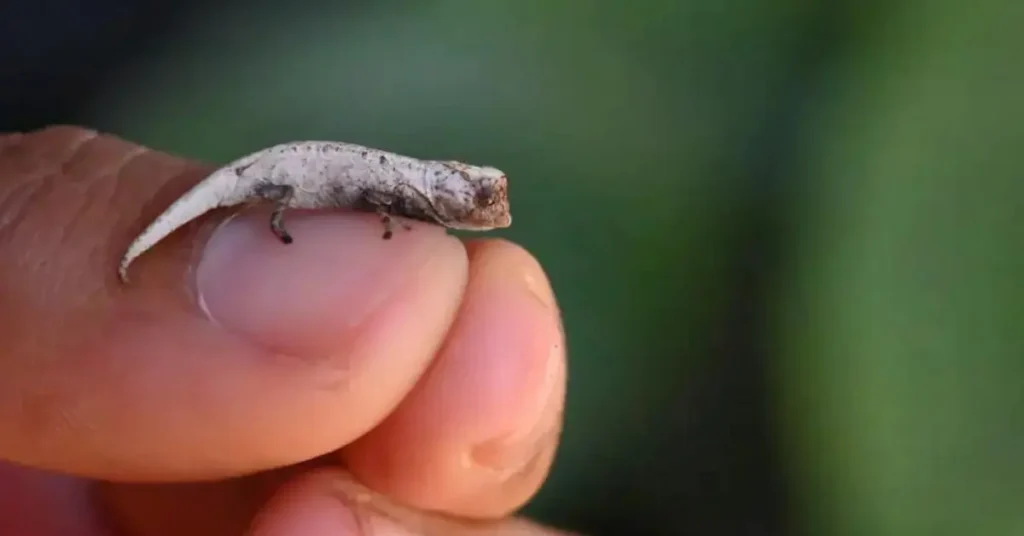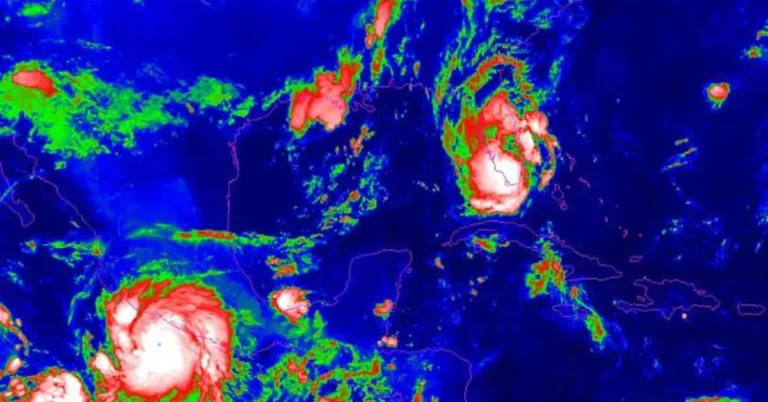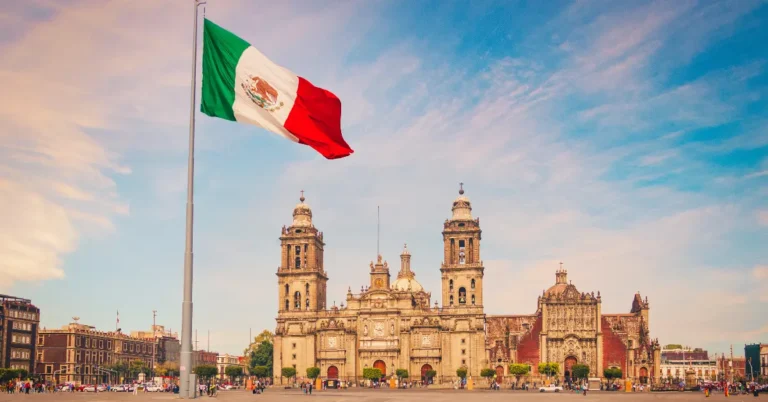Tourists in Madagascar discovered the world's smallest reptile, a new chameleon species, highlighting the island's rich biodiversity and the importance of ecotourism.

Imagine trekking through a vibrant rainforest, the air alive with the sounds of exotic creatures. Sunlight filters through the dense canopy, illuminating a tapestry of green.
Suddenly, you spot something extraordinary – a chameleon so small it could perch on your fingernail.
This is exactly what happened to a group of lucky tourists in Madagascar, leading to the discovery of a brand-new species: the Brookesia nana, or nano-chameleon.
A Tourist’s Tale: The Moment of Discovery
The group was exploring the remote rainforests of Ankanin’ny Nofy, a protected area known for its unique biodiversity.
As they ventured deeper into the verdant wilderness, their guide, a seasoned local expert, pointed out a minuscule creature clinging to a fallen leaf.
At first, it seemed like nothing more than a speck of dirt. But as they leaned in closer, they realized it was a chameleon, impossibly small and perfectly camouflaged.
Excitement rippled through the group. They had stumbled upon something truly special. Cameras clicked, capturing the tiny creature from every angle.
The guide, with a twinkle in his eye, explained that this might be a new species, never before documented by science.
The tourists, awestruck by their unexpected discovery, felt a sense of wonder and privilege.
They had become part of a story that would resonate far beyond the rainforest.
Also Read: Why Americans Don’t Travel (Much): Debunking the Myths and Embracing the Wanderlust
Meet Brookesia nana: The Tiny Chameleon
The Brookesia nana, or nano-chameleon, is a marvel of miniature evolution.
Measuring just 22 millimeters from nose to tail, it’s officially the smallest reptile on Earth.
Its brown and tan coloration allows it to blend seamlessly into the forest floor, making it a master of disguise.
These tiny chameleons are primarily ground-dwelling, spending their days foraging for insects among the leaf litter.
Their diminutive size is a testament to the unique pressures and opportunities of Madagascar’s isolated ecosystems.
Also Read: British Tourist Caught Defacing 2,000-Year-Old Pompeii Wall- Faces €60,000 Fine
Madagascar: A Haven for Wildlife Encounters
Madagascar, often called the “eighth continent,” is renowned for its extraordinary biodiversity.
Isolated for millions of years, the island has evolved a stunning array of plants and animals found nowhere else on Earth.
Lemurs, baobabs, and a kaleidoscope of chameleons are just a few of the iconic species that call this island home.
The discovery of the nano-chameleon adds another gem to Madagascar’s crown, highlighting the importance of ongoing conservation efforts.
While the island’s natural wonders are a magnet for tourists, it’s crucial to remember that responsible tourism is essential for preserving these fragile ecosystems.
By choosing sustainable tour operators and respecting the environment, visitors can help ensure that Madagascar’s unique wildlife thrives for generations to come.
Also Read: Travel Influencer Couple Drowns in Japan: A Love Story Cut Short
Ecotourism: Exploring Madagascar’s Natural Wonders
Madagascar offers a wealth of ecotourism opportunities, allowing visitors to experience its incredible biodiversity firsthand.
From guided rainforest treks and lemur safaris to kayaking through mangrove forests and snorkeling in vibrant coral reefs, there’s something for every nature enthusiast.
By choosing ecotourism, travelers not only contribute to the local economy but also support conservation initiatives that protect Madagascar’s precious natural resources.
It’s a win-win situation, fostering a sustainable future for both the island and its inhabitants.
Also Read: $60K Rolex Heist at Miami Airport: A Cautionary Tale for Travelers
Conclusion
The discovery of the nano-chameleon by a group of tourists serves as a reminder of the wonders that await those who venture off the beaten path.
Madagascar, with its unparalleled biodiversity and stunning landscapes, is a treasure trove for explorers and nature lovers.
As we continue to unravel the mysteries of this remarkable island, it’s imperative that we prioritize conservation and responsible tourism.
By treading lightly and appreciating the delicate balance of nature, we can ensure that Madagascar’s unique wildlife continues to inspire and amaze for generations to come.
So, pack your bags, embrace the spirit of adventure, and prepare to be captivated by the magic of Madagascar. Who knows, you might even stumble upon the next big discovery!










